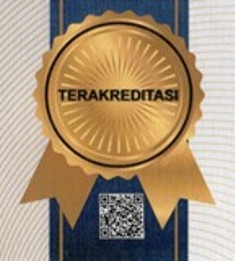Zones of Terrestrial Coastal Issues and Development Communication Strategy in Padang Pariaman Regency
DOI:
https://doi.org/10.24036/sjdgge.v8i1.600Keywords:
coastal zone, communication strategy, knowledge, attitude, practiceAbstract
This research aims to explore distinctive zones of terrestrial coastal issues in Padang Pariaman Regency and identify communication strategies to address each zone. This research employs a literature research method by collecting secondary data and interpreting, integrating, and analyzing information. This research identifies five zones for coastal management, namely a) sandy beach zone used for shrimp pond operations, b) sandy beach for recreation activity, c) coastal abrasion-prone zones, d) mangrove conservation zone, and e) sea turtle conservation zone. The government needs to empower and transform the community regarding knowledge, attitude, and practice through the development communication strategy. The important aspect of knowledge is information about coastal setback regulation and ecosystem processes with various impacts. Communication strategy for changing the attitude of people focused on avoiding causing harm to mangrove and turtle habitats and changing the habit of littering on the beach. Communities also have to be involved further in conserving mangroves and turtles.
Downloads
References
2. Chua T-E. Essential elements of integrated coastal zone management. Ocean &Amp; Coast Manag. 1993 May 29;21(1–3).
3. Cox R. Environmental communication and the public sphere.
4. Bessette G. People, Land, and Water: Participatory Development Communication for Natural Resource Management. International Development Research Centre; 2006.
5. Ahmad J, Noor SM, Ismail N. Investigating students’ environmental knowledge, attitude, practice and communication. Asian Social Science.
6. Luhmann N. Ecological communication. University of Chicago Press; 1989.
7. Meisner M. What is environmental communication? The IECA. meisner.ca; 2007.
8. Dean AJ, Fielding KS, Wilson KA. Building community support for coastal management- What types of messages are most effective? Environ Sci &Amp; Policy. 2019 May 27;92.
9. Stanica A, Ungureanu V. Understanding coastal morphology and sedimentology. Terre Environ. 2010;88(1992):105–11.
10. Prarikeslan. Shoreline Change Detection Using Dsas in Pariaman City, West Sumatera Prarikeslan Geography, Environment, Sustainability. 2022;
11. Prarikeslan W, Syah N, Nanda Y. Evolution of the Coastline in Padang Pariaman Regency, West Sumatra, Indonesia: Analysis Period from 1988 to 2018. Phys Oceanogr. 2022;29(5):536–47.
12. Pariaman PKP. Buku Laporan Status Lingkungan Hidup Daerah (LSHD) Kabupaten Padang Pariaman. 2019.
13. Aini M, Parmi HJ. Analisis Tingkat Pencemaran Tambak Udang di Sekitar Perairan Laut Desa Padak Guar Kecamatan Sambelia Kabupaten Lombok Timur. J Aquat Fish Sci. 2022;1(2):67–75.
14. Witomo CM. Dampak Budi Daya Tambak Udang Terhadap Ekosistem Mangrove. Bul Ilm Mar Sos Ekon Kelaut dan Perikan. 2018;4(2):75–85.
15. Nur H, Haryadi R. Identifikasi Tipologi Lokasi Tambak di Kabupaten Padang Pariaman. J Geogr. 2022;11(2):137–50.
16. PERPRES No. 51 Tahun 2016 tentang Batas Sempadan Pantai.
17. Hasibuan GP, Johan Y, Brata B. Kajian Kedudukan Garis Pantai Untuk Penetapan Sempadan Pantai Kota Bengkulu. Naturalis. 2020;9(2):119–31.
18. Perikanan PMK dan. Peraturan Menteri Kelautan Dan Perikanan Republik Indonesia Nomor 21/Permen-KP/2018. 2018.
19. Risingsea.net. impacts of sea level rise and what to do now. 2009;
20. Gunathilaka M. Environmental Communication for Mangrove Restoration and Conservation in a Fishing Village, Sri Lanka. International Journal of Research and Innovation
21. Susanne Willne. Strategic Communication for Sustainable Development: a conceptual overview, 2006. Eschborn, Germany












